Bioidentical Hormones Vs. the Functional Approach to Endocrine Health: Part I
“As we become more educated about safer alternatives and become more aware of the social, economical, and environmental influences which prolong harmful health habits, we will be able to understand more clearly the distinction between the politics and the evidence.” ~Raquel Martin – THE ESTROGEN ALTERNATIVE
When it comes to your health, a properly functioning endocrine system and hormonal balance is absolutely essential. For over six decades now, while dealing with endocrine issues, the standard of care for both conventional and integrative physicians has been Hormone Replacement Therapy (HRT). Whether it be a teenager with painful periods put on the Birth Control Pill, a thirty year old woman with anxiety and acne prescribed Progesterone Cream, a menopausal woman experiencing hot flashes and weight gain given Estrogen Patches, or even an adult male with low libido handed supplemental Testosterone, this “replacement therapy” or “topping off” approach is far from the solution to most hormonal woes.
HRT AND BIOIDENTICAL HORMONES
While there were many studies published in the 70s and 80s, it wasn’t until 2002 when a lot of public interest in HRT was sparked. The Women’s Health Initiative (WHI) released a massive study with data collected for over 50 years on women using conventional HRT. The pharmaceutical hormones being used in this study were FDA approved Premarin and Provera, synthetic estrogen and progesterone conjugated from pregnant equine urine. The study was halted when the research showed dramatic increased incidence of heart attack, stroke, breast and endometrial cancers in patients taking these hormones. After the NIH came out with a public statement declaring the harmful risks of HRT, millions of women were left looking for a safer, more natural option for their hormonal symptoms. Enter Bioidentical Hormone Replacement Therapy (BHRT).
Bioidentical hormones are biochemically identical to the hormones produced in our bodies, therefore the endocrine system can’t distinguish them from our own. They are formulated from plant based substances such as yam and soy. However, lets be clear about this. The BHRT that is taken orally, sublingually, as a patch, pellet, or applied as a cream only starts from “natural” plant products. It is then synthesized in a lab and chemically altered into a pharmaceutical grade substance with conversion factors and enzymes added to make it active and usable in the body. While I do agree that BHRT is a much much better option than conventional HRT, it is no more “natural” than their pregnant mare urine counterparts. Safer? Theoretically. More natural? Don’t kid yourself. Since there have been zero long term major studies conducted on BHRT, the jury is still out on the efficacy or safety of this treatment approach. For now, they fall under the category of “innocent until proven guilty”, like so many others being prescribed.
The point of this article is not to argue whether or not bioidentical hormones are safer than conventional HRT, or whether compounded BHRT are more natural than FDA approved BHRT. It is actually to discuss whether the hormone replacement model of healthcare (bioidentical or not) is the best approach to hormone health. In my opinion, it is a very simplistic and symptom based approach with a complete disregard for restoring function to endocrine physiology. The problems that are arising are not from the actual hormones themselves, but from the poor management of how they are being prescribed and the lack of education to the patient as to other steps that need to be taken. Can BHRT be helpful? Certainly. Bioidentical hormones have a place if they are used wisely for specific conditions, with small doses, very short term, all the while working on the underlying issues causing the endocrine disruption.
WHY HORMONE REPLACEMENT IS TOO SIMPLISTIC
Just because a lab shows that you are low in a specific hormone doesn’t mean you should supplement with that hormone. For example, it is common for men to have their testosterone measured because they are experiencing low libido or erectile dysfunction. The labs show testosterone is low and then testosterone is prescribed. Unfortunately, it’s rare that they are questioning “why” the testosterone is low. But what if the testosterone was low because of aromatization or conversion into estrogen? This is commonly seen in Insulin Resistance when an enzyme called aromatase is up-regulated and converts testosterone into estrogen. In this case if you give the man more testosterone then he will just end up with more estrogen when aromatization occurs. Hardly what the poor guy was asking for! Working on the root cause, insulin resistance and blood sugar regulation, is where you will see the long term results.
Another example is the commonly prescribed Thyroid Hormone. More often than not this hormone is handed out to patients based off of the single blood marker TSH (thyroid stimulating hormone). If TSH is high it is understood that production of T4 (thyroid hormone) is low, therefore T4 is prescribed. There are a lot of problems with this situation. Most notably, the lack of information from only using one thyroid marker. There are NINE blood markers that I use in my practice to analyze thyroid function and paint a better picture as to where the breakdown is occurring. Using TSH alone is assuming that the breakdown is occurring in the production of T4. But what if thyroid function is low not because of an inadequate production on T4, but from the lack of conversion from T4 to T3 (the active usable form of thyroid hormone)? Systemic inflammation and poor liver function can disrupt this conversion from happening. You can pop T4 pills all day long but no difference will be made if you are not converting T4 to T3. Working on the root cause of inflammation and supporting liver health is where the focus needs to be. There are a multitude of reasons for poor thyroid function. Inflammation causing decreased thyroid receptor sensitivity, Autoimmunity, elevated estrogen levels effecting active T3, among others. Thyroid health is a huge topic and I will have to jump down that rabbit hole in a future post. My point is that there is no one size fits all treatment. And no magic hormone pill, bioidentical or not , that is the key to endocrine health. These are just a few of many examples of why the replacement approach is too simplistic.
HPATG AXIS SUPPRESSION
When prescribed appropriately and monitored regularly, BHRT can help relieve symptoms. But unfortunately, if taken long term you risk making problems worse by suppressing the natural regulatory feedback mechanisms in place that lead to proper hormone production. This negative feedback mechanism is generally referred to as the HPATG Axis (Hypothalymus-Pituitary-Adrenal-Thyroid-Gonadal Axis…quite the mouthful!) This is a broad term used to explain the complex communication network between your brain, endocrine glands, hormones, and neurotransmitters. This axis regulates the activity of cells, organs, growth, metabolism, stress response, reproduction, general homeostasis, among many other things. It is absolutely crucial to life, to say the least. This negative feedback works as a sort of “checks and balance” system for your endocrine glands. Simply put, when your brain recognizes that a hormone has too high of levels in the blood, the pituitary releases inhibitory chemicals to a specific gland to stop the production and release of that hormone. The specific gland that was targeted then slows down production of the hormone and sends a signal back to the brain to stop releasing the inhibitory chemical messenger. This also works vis versa with stimulating chemicals to instigate production of more hormones from the glands when levels are too low. This type of feedback communication is happening with your brain between your thyroid, adrenals, gonads, and pancreas. And to complicate matters, all of those glands influence, interact, and cross-talk with each other as well.
One of the risks of using exogenous (supplemental) hormones long term is that it can suppress this HPATG Axis. When you take the supplemental hormones the levels of that hormone increase in your bloodstream. The pituitary then recognizes the increased hormone levels and then decreases your own internal production of it. This isn’t an issue while you are taking that hormone because you are still getting what you need through supplementation even though your body is producing less of its own. The problems starts when you have these high levels of hormones in your blood stream over time because the hormone receptor sites become down-regulated and less sensitive to that hormone. This means that the hormones will not create the same response as they are supposed to. I’m sure you have heard of Insulin Resistance, this is what we now know of as Hormone Resistance. As you develop hormone resistance from the HRT or BHRT you eventually have to keep increasing your dose to create the same effect. This also makes it very difficult to come off of the hormones because your own natural production of hormones is suppressed and the glands can become “lazy”. Of course, there are always conditions where hormone replacement is necessary, but we still want do everything we can to determine the underlying causes of hormone imbalance and limit the amount of exogenous hormone use.
FUNCTIONAL APPROACH TO HORMONE HEALTH
The functional approach to hormone health aims to restore proper physiology. In order to restore proper physiological balance to the endocrine system several factors must be addressed. Besides restoring HPATG Axis function as mentioned above, we also need to address these crucial factors:
-Endocrine Disrupters and Environmental Toxins
-Stress Response / Adrenal Health
-Blood Sugar Imbalance
-Nutrient Insufficiencies
-Liver Health
-Gut Microbiome
-Genetics
All of these pieces to the puzzle will be discussed in Part II of this series as we dive into the functional approach to restoring hormone health. Stay tuned!
REFERENCES
Women’s Health Initiative (WHI) Research https://www.nhlbi.nih.gov/whi/estro_pro.htm
“The Hormone Cure” by Sara Gottfried
“The Estrogen Alternative” by Raquel Martin
“Functional Blood Chemistry” Seminar by Dr. Ronda Nelson








